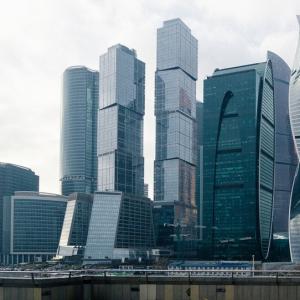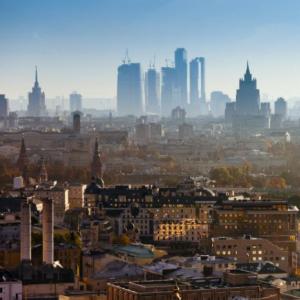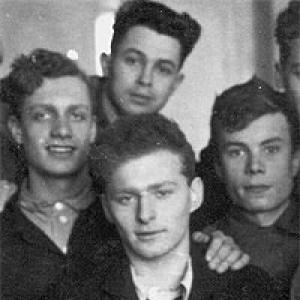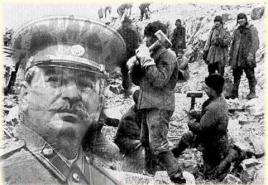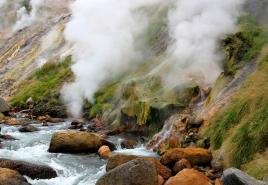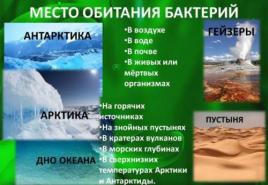The education system in the 90s. What is happening with Russian education? Education as a holistic system
Where did our education go in the 90s
In the 1990s, the problems inherited from the Soviet education system became much more acute. Completely new problems arose that did not exist before or were successfully solved by the Soviet authorities.
The volume of state financing of Russian education in the 1990s was significantly reduced. At the same time, the downward trend in spending on education, as a % of GDP, distinguished the Russian Federation not only from developed countries, but also from European countries with economies in transition (Tables 1 and 2). The increase in the share of public spending on education in GDP allowed most of these countries to almost not reduce spending on education at comparable prices during the economic downturn that accompanied economic reform. In most of these countries, the average wage of educators has not fallen below the average wage of those employed in the economy.
Table 1. Some indicators of financing the education system of the Russian Federation in 1991-2000
|
Government spending on education: |
||||||||||
|
in comparable prices (1991=100)* |
||||||||||
|
Average salary in education: |
||||||||||
|
In % to the average for the economy |
||||||||||
|
in % of the subsistence minimum |
||||||||||
*Calculated by the method of deflation of costs by items of budgetary classification of expenses
Table 2. Selected Education Financing Indicators During the Economic Downturn in European Transition Economies*
|
Expenditures on education as % of GDP: |
||||||
|
Bulgaria |
||||||
|
Slovakia |
||||||
|
Expenditure on education in comparable prices (1990=100): |
||||||
|
Bulgaria |
||||||
|
Slovakia |
||||||
|
Average salary in education in % of the average salary in the economy: |
||||||
|
Slovakia |
||||||
*Cm. Trends in Education Access and Financing during the Transition in Central and Eastern Europe - World Bank Technical Paper N 371. Washington, 1997.
In the Russian Federation, the fall in real spending on education in the 1990s was landslide. The average wage in the industry fell below the subsistence level; at the same time, there were also months-long delays in the payment of salaries. The state of the material and technical base of educational institutions has significantly deteriorated. The level of technical equipment of schools has decreased, for example, several times. The program of computerization of general educational institutions was practically a failure: one modern computer now accounts for an average of 500 students. The commissioning of new objects of the education system has sharply decreased (Fig. 1). A significant part of the buildings of educational institutions currently require major repairs or are in disrepair.

Figure 1. Commissioning of objects of the education system in the Russian Federation, in % by 1990
One of the main negative trends in the Russian education system in the last decade has been the growing differentiation in the availability of different levels of education, as well as in the level and quality of the education received. There are growing inter-regional differences, differences between urban and rural areas, inequality of opportunities for children from families with different income levels to receive quality education.
Among the main reasons for the growth of differentiation in the education system, it should be noted, firstly, the transfer of responsibility for financing most educational institutions to the level of local budgets (out of the total education costs of the consolidated budget of the Russian Federation in 2000, local budgets accounted for 62%, the budgets of subjects of the federation - 20% , the federal budget - 18%) with significant differences in the size of their revenue base and, secondly, the growth of paid education. The ideological substantiation of these processes was the concept of liberalization of education, including the decentralization of management, the expansion of the variety of organizational and legal forms of educational institutions, the provision of "freedom of choice" of forms and types of education.
8 - Federal program "Development of a unified educational information environment for 2001-05." (project) - Public education, 2001, N 1.
Have students changed in recent years? What about the last few decades? What are the characteristics of each generation?
Let's immediately accept the thesis that children are different and the school primarily reflects the state of society.
Schools in the USSR maintained the tradition of separate upbringing of children until 1954. Only this year, classes for men and women are united. As before, there is a school uniform. For boys, this is an analogue of the military - a tunic or tunic with a white collar, for girls - brown dresses and an apron (everyday black or white front). Somehow it will stand out, the children could only by the quality of the material of the form, tailoring, unusual handles.
An obligatory element of clothing was a pioneer tie. To forget him at home, to lose him was a great tragedy for the child and caused a harsh reaction from those around him. The tie is first fixed with a clip, then tied with a special knot.
The relationship between the children was even, parental positions and welfare did not affect them. But the teacher was at a certain distance from the student. The teacher was an indisputable authority. The words engineer, teacher, doctor sounded proud, it was the dream of many. But few people could afford to get a higher education, they had to go to work, help their families.
In the 60s obligatory eight-year period is introduced. At this time, books are very popular, schoolchildren read, and not only heroic adventure novels, but also poetry. The idols of children were the heroes of the revolution, the Civil and Patriotic Wars.




By 70m - 80 years there is a certain variety of school uniforms, different styles of dresses, alternatives to them in the form of skirt suits. Fashion trends force girls to shorten their skirts as much as possible.
There are many children at this time, large classes in primary and secondary schools, many classes in parallel. Still actively reading. Books are considered the best gifts, they are hotly discussed, Remarque and Aitmatov are especially popular.


Children are fond of new areas of knowledge, astronautics and natural sciences in general are at their peak. There are many circles, sections, electives. What is characteristic is that teachers deal with children disinterestedly, develop new methods and approaches. The authority of the teacher is still high, he teaches not only to memorize information, he tries to teach the child to process it, analyze it.

All sorts of events are often held: celebrations of various dates, excursions, amateur concerts, to which parents are also attracted. Joint cleaning, repairs, collection of waste paper and scrap metal are also practiced. True, by the end of the 80s it becomes more of an obligation, from which they are trying to evade. And indeed, it really is not clear why to collect, drag heavy waste paper to the school yard, where it then gets wet in the rain, is carried by the wind, or moreover, is burned here in the school boiler room.

Patriotism is still strong, war heroes are popular. But Afghanistan is already beginning and there is fear. Girls are strict, gender relations are chaste.
90s years become a turning point. The first change is related to the cancellation of the form. And if the first years, there are still some restrictions, certain requirements, then very quickly they are eroded. Clothing at school becomes as noisy, awkward as on the streets, right down to tracksuits. Girls are already using make-up, and quite bright, aggressive, and finally there is an opportunity to wear trousers.
The mindset of students is changing. This is a period of rapid growth and redistribution of capital. Therefore, the attitude of children is the same - money decides everything. The professions of economic and legal direction are becoming prestigious. Teachers and doctors completely lose their prestige, the main criterion for choosing a profession is the amount of earnings. Although higher education is still valued and prestigious. But already as a symbol of well-being, only the presence of a crust is important, as a decorative decoration.
In the early 21st century, children have become pragmatists. They see the goal and persistently go to it. They stopped paying attention to optional subjects. They need only those that are useful for entering the university, passing exams. Everything else is a waste of time. Mathematics and languages become such leaders.
The attitude towards books has changed. Firstly, books became expensive, and secondly, there was a problem with textbooks in schools. Therefore, a simple solution was found - just download the text from the Internet, print it out and throw it away after use.
The approach to the teacher has become just as utilitarian - he is just an assistant or, on the contrary, an obstacle to entering and passing exams (depending on the obligatory nature of the subject taught). Again, higher education is still prestigious, necessary, but it is already being evaluated from the point of view of the prospect of taking a good position later. In addition, the eternal lack of money of teachers does not improve their position in the eyes of students.
Another characteristic attitude of students is that cleaning or any social events become unacceptable, everything is decided by money, the attitude towards the school as a kind of service.
So children are a product of the civilization that surrounds them. The school, like a litmus test, reflects the trends in society and it is probably worth looking at them ...
2010


In the 90s. there have been major changes in the education system in Russia. On the one hand, the ideologization of spiritual life and the state regulation of all spheres of culture are a thing of the past. The principles of eliminating the state monopoly on education were proclaimed; greater participation of local authorities in the management of education; the independence of educational institutions in determining the directions of educational activities, the transition in pedagogical relations to a system of cooperation between teachers, students and parents. On the other hand, insufficient funding of state educational institutions has led to an outflow of qualified teaching staff from secondary and higher schools, to a crisis in university science and a drop in the level and quality of education. At the same time, the declarations on the broad democratization of education and upbringing remained largely good wishes. The traditions of centralized school management are still strong, and a cumbersome bureaucratic apparatus remains.
In the late 80s - early 90s. in Russia, the traditionally strong craving for education has weakened. According to statistics, in 1989 only 10% of high school graduates showed an interest in studying. In 1987, 50% of the surveyed high school students put education in the middle of the list of social values - after friendship, love, power, pop music, money, sex, etc. The sharp decline in the standard of living of the country's population turned out to be a more urgent problem.
State regulation of the education system went blindly, by trial and error. By the end of the 80s. complete secondary education ceased to be universal, that is, compulsory, but remained free and publicly available. The school got the opportunity to refuse the obligatory state minimum of subjects; a lot of hasty alternative programs and textbooks appeared, which disrupted the continuity of secondary and higher education, lowered the overall level of training of schoolchildren.
In the early 90s. the next step was taken: according to the Constitution, all citizens were provided with compulsory and free basic nine-year education, but free full secondary education was not guaranteed. This automatically turned the secondary school into a two-level one, leaving the category of teenagers aged 15-16 without social protection. At parliamentary hearings on the topic “Education and national security in Russia (May 1996), it was noted that every tenth young Russian is outside of any form of education and employment. This contributes to the growth of crime among young people, the rate of which in recent years has increased 15 times compared to crime among adults.
To preserve the education system, it was necessary to introduce state educational standards, which include mandatory federal and regional minimums for subjects in school curricula. The new version of the law "On Education" states that complete secondary education remains publicly available and free of charge. The Education Act of 1992 provided for the annual expenditure on education at the level of at least 10% of the national income. In fact, this level was 4.6% in 1992, 5.8% in 1993, and about 3% in 1994.
Budget financing of the adopted legislative acts was not provided, however, by the mid-90s. the prestige of education and understanding of its necessity has grown. If in 1992 52-54% of pupils from the 9th grade entered the 10th grade, then in 1996 - 58-60%; if in 1992 only 20% of high school students believed that they needed knowledge for the future, then in 1996 - more than 50%. In 1992, an average of 2 people applied for first place in universities, in 1997 - 5 people, in law schools - 10, not 8, in technical universities - 2.2, not 1.8.
Society's need for a higher level of education is growing, and on this wave of public interest, the education system has every opportunity not only to survive, but also to become more perfect, since the end of the 80s. the differentiation of education according to the inclinations and abilities of children began. Creatively strong schools were transformed into gymnasiums, lyceums
with specialization in a whole cycle of subjects or in-depth study of individual disciplines; profile classes appeared in many schools: mathematical, humanitarian, natural. There are free (compulsory) and paid (additional) subjects in secondary school, more and more often university teachers are invited to the school in order to close the gap between the level of training of school graduates and the requirements of higher education. In a secondary school, various forms of self-government are allowed: the school council, the board of trustees, the general meeting, etc. The main problem of the school is the position of the teacher, who is at the very bottom of the social ladder in terms of salary, hence the fall in the prestige of the teacher, a strong "feminization" of the school, a constant shortage of qualified teachers. In the 1995-1996 academic year, general education institutions lacked about 13,500 teachers.
The system of general vocational education in the 90s. enriched with new types of educational institutions - lyceums and colleges. The curricula of the best educational institutions of this type are more extensive, aimed at mastering the most modern and necessary specialties.
The higher education system includes universities, academies and institutes. In 1992, there were 535 state universities in the country, in 1997 their number increased to 573. During the same time, the number of students per 10 thousand population increased from 176 to 196 (the highest level was in 1970 - 189 students) . Reforms started in 1987 are continuing in higher education: the organization of the educational process is changing, the differentiation of programs is deepening through the introduction of diverse and numerous training courses. Attempts are being made to move away from the traditional five-year course of study, dividing it into two stages - undergraduate and graduate. In most state universities, commercial departments were created, including those for those wishing to get a second higher education, and partly, postgraduate studies also became paid.
Since 1992, the non-state (private) sector of education began to actively form. Private primary and secondary schools are attracted by an individual approach to the student (including the "difficult" student who did not get along in a public school), low class sizes, a variety of subjects and services, and sometimes a high quality of teaching. In the 1994-1995 academic year, there were approximately 450 non-state primary and secondary schools in the Russian Federation, in which about 40 thousand students studied.
Private universities are still able to withstand competition with state-owned ones due to the ongoing hype around economic, legal and philological education and due to the greater applied orientation of teaching. In 1997, there were over 240 non-state universities in the country. The Law “On Higher and Postgraduate Professional Education” of 1996 placed private higher education institutions on an unequal footing with state ones, obliging them to receive state accreditation. The emergence and development of private education is, of course, a positive factor, since it allows satisfying the diverse needs of people in educational services, gives the education system the necessary dynamism, and opens up space for competition and creative growth.
GOU SPO "VOLOGDA PEDAGOGICAL COLLEGE"
Special question on the topic:
History of formation
additional education
in the 90s
specialty 050710
Pedagogy of additional education
5th year students
Artyushina Larisa Vitalievna
VOLOGDA
1. Introduction 3
2. The history of the formation of additional education in the 90s of the XX century. 4
3. The history of the formation of additional education on the example of the Palace of Creativity for Children and Youth. 7
4. Conclusion 11
5. References 12
1. Introduction
The purpose of the work: In theoretical and practical aspects, to show the history of the formation of additional education in the 90s.
1. Show the process of turning extracurricular work into additional education in the 90s of the XX century.
2. Track the implementation of these changes in a particular institution using the example of the Palace of Creativity for Children and Youth.
The relevance of this work is that it traces the processes that took place during the formation of additional education as a system, as well as their reflection in the activities of a particular institution.
The system of additional education emerged in the early 90s from extracurricular activities. In connection with the change in status, it also required many other fundamental changes in the organization of the system's activities. The 1990s became a stage of radical transformations and resolution of contradictions. Now the system of additional education is actively developing, but the beginning of this development was laid precisely in the 90s. Therefore, it is very important to trace the causes and patterns of its development in order to use this experience in the future to achieve better results.
2. The history of the formation of additional education in the 90sXXV.
Additional education for children is a special area of education, which is implemented through additional educational programs and services both in institutions of additional education and in general educational institutions. Additional education is a subsystem of general education, but at the same time it can be considered as an independent educational system, as it has the integrity and unity of its constituent elements that are connected to each other.
Out-of-school work with children and adolescents “on interests” has been carried out since the middle of the 18th century and, like additional education, was aimed at meeting the needs of children, organizing meaningful leisure and professional orientation. After the fall of the Soviet political system and the transition to a market economy, the education system, like other public institutions, felt the need for change. The following factors influenced the development of the system of additional education:
- Change of value orientations, rejection of restrictions in the field of educational activities. On the wave of liberation from instructions and rules, methodological departments began to collapse and educational work was forced out. Realizing the need for systematic methodological support, additional education institutions began to restore methodological structures.
- Reduction of funding, in connection with which the number of out-of-school institutions began to decline, the material and technical base deteriorated sharply. In the early 90s, spending on education amounted to 4-6% of the budget expenditures, which was half of the need. In an effort to avoid the destruction of the system, many heads of educational authorities and out-of-school institutions began to introduce paid educational services, seek help from individuals and various foundations.
A huge role in the preservation and development of the national education system was played by the law of the Russian Federation "On Education", adopted in 1992. In the Law, a whole section is devoted to additional education. Thus, a new term was introduced and a legal justification was given for reforming extracurricular work and turning it into a system of additional education. Thus, the system of additional education emerged in Russia in 1992 and was the successor to extra-curricular and out-of-school work. The main difference from its predecessor is that additional education is conducted in the same way as other types and types of education - according to specific educational programs.
In the legislative field at the federal level, important documents have been adopted that substantiate the strategy for the development of institutions of additional education for children, their typology, the rules for attestation and accreditation, the directions and content of additional education. These resolutions made it possible to solve many problems of a managerial and organizational nature, to support the diversity of institutions of additional education. New institutions and associations have emerged such as early development schools for preschoolers; gymnasiums and lyceums as part of institutions of additional education for children; cultural and educational centers that combine a general education school and cultural institutions (club, children's music school, children's art school, library, museum); centers of Christian culture; environmental and health associations, computer clubs, TV, video and photo studios. Interest in military-sports and sports-technical activities is being revived.
There have been very important changes in the software and methodological support of additional education. The institutions began to create their own educational programs, which formulate a unified approach, a common philosophy of activity. Educators also have the opportunity to get acquainted with the programs of their colleagues through new periodicals that have appeared. The publication of a series of books "Upbringing and additional education of children" has begun. Serious scientific and methodological work was launched, thanks to which additional education received a theoretical justification. The most important provisions were put forward in the works of V.V. Belova, V.A. Berezina, A.K. Brudnova, G.P. Budanova, O.E. Lebedeva, M.B. Koval, V.I. Panova, G.N. Popova, A.I. Shchetinskaya.
The training of teachers of additional education in colleges has begun. The situation with the advanced training of teachers of additional education has changed. The courses that are held in the IPC become more effective.
According to the Ministry of Education, in 1998-1999 the number of institutions of additional education of various departmental affiliations was 17 thousand and covered 9.5 million children, an average of about 40% of children.
The most promising areas of additional education have been formed:
- Cultural and ethnographic.
- Spiritual.
- Professional orientation.
- Socially adaptive.
Let us consider the Palace of Creativity for Children and Youth in Vologda as one of the institutions of additional education for children.
3. The history of the formation of additional education on the example of the Palace of Creativity for Children and Youth.
The Palace of Creativity for Children and Youth (hereinafter referred to as the Palace) is the largest multidisciplinary institution of additional education in the city of Vologda. It was founded in 1940 as the House of Pioneers and Schoolchildren. Since the opening of the House of Pioneers, photo circles, cutting and sewing, a radio engineering circle, and an art studio have been working here, in which 160 children were engaged. The activity continued during the Great Patriotic War, new circles were opened: ballet, choral, drama, military. The number of pupils increased, which became 460 people.
Since 1989, the City Pioneer House has been housed in a modern
four-story building, and in 1990 changed its name to the Center for Creativity of Children and Adolescents. The structure of the Center included 8 divisions, in which more than 2 thousand children were engaged in 180 groups. The teaching staff of the Center consisted of 65 people.
Since 1997, the number of teachers and pupils has grown significantly. By the decision of the Administration of the city of Vologda, 12 teenage clubs at the place of residence became branches of the institution: the club "Northern", "Dream", "Globus", "Scarlet Sails".
In 1999, the Institution had 3,400 children. The teaching staff of 108 people, the parent community and pupils discussed and adopted a new edition, which was brought in accordance with the model regulation on the institution of additional education for children, in connection with this there was another name change, now it is the Palace of Creativity for Children and Youth. Its main purpose remained unchanged - to develop the creativity and initiative of schoolchildren.
With the transition to a new status in the Palace, all the best that had been accumulated in previous years was preserved and further developed.
The main type of meaningful activity in accordance with the Law of the Russian Federation "On Education" is educational. It is defined as a specially organized activity of teachers and pupils of the Children's and Children's Children's and Children's Department, aimed at solving the problems of education, upbringing, training and development of the individual, the formation of a system of moral and aesthetic relations in a team of children and adults. The main goal of educational activity is such an organization of education, which creates the best conditions for self-expression, self-development, self-determination of children. The starting position of this approach is the vision of the student not as an object, but as a subject of learning, which is possible under the condition of the development of such personal qualities as communication, independence, and activity.
The organization of the educational process DTDM has its own characteristics:
Students come to classes in their free time from the main studies;
Training is organized on a voluntary basis by all parties (children, parents, teachers);
Children are given the opportunity to combine different areas and forms of classes, move from one group to another (by topic, age composition, level of intellectual development);
The Palace team creates the most comfortable conditions for children in the classroom.
The educational activities of the Palace of Creativity for Children and Youth are built in accordance with the educational program and implemented in 297 associations, where 4289 children aged 4 to 18 study.
The activities of the Palace are implemented through 147 educational and educational programs, 74 of them are based on the Palace; 73 in the structural divisions of the Palace.
The Palace is implementing a comprehensive program of the early development school "Malyshok", which has been in existence for 7 years, where children from the age of 4 learn aesthetic and educational subjects.
The Palace of Creativity provides children with the opportunity to receive pre-vocational training and initial vocational education.
In the workshops of the creative association "Vologda Origins", teachers organize the creative activities of children in the revival, preservation and development of folk art crafts in the city of Vologda, develop in children the skills, abilities and techniques of traditional artistic processing of materials. Along with this, teachers are doing a lot of methodological work: on the basis of workshops for knitting, macrame, pottery, trainee sites for teachers of the city and region work.
Children realize their creative abilities in numerous groups and studios of the artistic direction.
The teachers of the collective "Radunitsa" form the artistic taste of children, contribute to their spiritual development through the study of folk song poetry.
The theater-studio "Podrostok" worked in the Palace for 8 theatrical seasons, the repertoire of the studio included 15 performances. Teachers work on the formation of the child's personality in the theater group.
Dance groups are especially popular with the children, there are four of them in the Palace: this is the oldest folk dance group "Rainbow", the variety dance group "Surprise", the ballroom dance group "Rhythm" and the studio "Eva-ballet", in which children learn the basics of classical dance , jazz and modern dance.
Children who are keen on sports are interested in classes in sports groups: karate-do, sambo, judo. More than ten years in the Palace there is a team "Young Graces" - a team of rhythmic gymnastics.
The activities of DTDM are multifaceted. This is a city center for methodological work with children's public organizations, teenage clubs, summer health and specialized camps, institutions of additional education.
In the information and methodological department of the Palace, teachers-organizers, class teachers and deputy directors for educational work find answers to their questions.
In order to create conditions for the development of student self-government in the city's schools, since November 1997, a city student self-government council (GUSS) has been established.
Since 2001, the Palace has been cooperating with the Vologda Pedagogical College, providing a base and personnel for the training of future teachers of additional education.
For 60 years, many traditions have developed in the Palace. For example, the first Sunday of September is an open day, and on May 19 a gala concert of the creative teams of the Palace takes place, holidays have become traditional - family day, mother's day, and the New Year campaign for city schoolchildren is also bright and unforgettable.
By the beginning of the 21st century, the most promising areas of additional education were formed:
- scientific and technical,
- ecological and biological,
- tourism and local history,
- sports and technical,
- cultural,
- socio-pedagogical,
- artistic and aesthetic,
- physical culture and sports,
- natural science,
- military patriotic.
4. Conclusion
An analysis of the transformations carried out in the 1990s suggests that a fairly viable system of additional education has developed in our country, which has absorbed much of what was in out-of-school education. This system received a legislative justification, and, developing, strengthened the methodological, personnel, material and technical base. However, to achieve better results in the 21st century, there are many complex problems to be solved:
- Strengthening the legislative framework;
- Creation of an integral system of training, retraining and advanced training in universities and IPK;
- Development of additional education in educational institutions;
- Search for the most effective links between schools and institutions of additional education, development of new forms of cooperation with public and state organizations;
- Creation of a new generation of programs, manuals, textbooks for the system of additional education, as well as audio-visual, computer materials that meet modern requirements;
- Search for ways to integrate socially disadvantaged children into the system of additional education.
5. References:
- Golovanov V.P. Methods and technology of work of a teacher of additional education: textbook. allowance for students. medium institutions. prof. education. - M.: Humanitarian. ed. center VLADOS, 2004. - 239 p.
- Evladova E.B., Loginova L.G., Mikhailova N.N. Additional education for children: textbook. allowance for students. medium institutions. prof. education. - M.: Humanitarian. ed. center VLADOS, 2002. - 352 p.
- Lebedev O.E. Additional education for children. - M. 2000.
- Methodical materials of the Palace of creativity of children and youth.
Additional education for children is a special area of education, which is implemented through additional educational programs and services both in institutions of additional education and in general educational institutions. Additional education is a subsystem of general education, but at the same time it can be considered as an independent educational system, as it has the integrity and unity of its constituent elements that are connected to each other.
Out-of-school work with children and adolescents “on interests” has been carried out since the middle of the 18th century and, like additional education, was aimed at meeting the needs of children, organizing meaningful leisure and professional orientation. After the fall of the Soviet political system and the transition to a market economy, the education system, like other public institutions, felt the need for change. The following factors influenced the development of the system of additional education:
1. Change of value orientations, rejection of restrictions in the field of educational activities. On the wave of liberation from instructions and rules, methodological departments began to collapse and educational work was forced out. Realizing the need for systematic methodological support, additional education institutions began to restore methodological structures.
2. Reduction of funding, in connection with which the number of out-of-school institutions began to decline, and the material and technical base deteriorated sharply. In the early 1990s, spending on education amounted to 4-6% of the budget expenditures, which was half of the need. In an effort to avoid the destruction of the system, many heads of educational authorities and out-of-school institutions began to introduce paid educational services, seek help from individuals and various foundations.
A huge role in the preservation and development of the national education system was played by the law of the Russian Federation "On Education", adopted in 1992. In the Law, a whole section is devoted to additional education. Thus, a new term was introduced and a legal justification was given for reforming extracurricular work and turning it into a system of additional education. Thus, the system of additional education emerged in Russia in 1992 and was the successor to extra-curricular and out-of-school work. The main difference from its predecessor is that additional education is conducted in the same way as other types and types of education - according to specific educational programs.
In the legislative field at the federal level, important documents have been adopted that substantiate the strategy for the development of institutions of additional education for children, their typology, the rules for attestation and accreditation, the directions and content of additional education. These resolutions made it possible to solve many problems of a managerial and organizational nature, to support the diversity of institutions of additional education. New institutions and associations have emerged such as early development schools for preschoolers; gymnasiums and lyceums as part of institutions of additional education for children; cultural and educational centers that combine a general education school and cultural institutions (club, children's music school, children's art school, library, museum); centers of Christian culture; environmental and health associations, computer clubs, TV, video and photo studios. Interest in military-sports and sports-technical activities is being revived.
There have been very important changes in the software and methodological support of additional education. The institutions began to create their own educational programs, which formulate a unified approach, a common philosophy of activity. Educators also have the opportunity to get acquainted with the programs of their colleagues through new periodicals that have appeared. The publication of a series of books "Upbringing and additional education of children" has begun. Serious scientific and methodological work was launched, thanks to which additional education received a theoretical justification. The most important provisions were put forward in the works of V.V. Belova, V.A. Berezina, A.K. Brudnova, G.P. Budanova, O.E. Lebedeva, M.B. Koval, V.I. Panova, G.N. Popova, A.I. Shchetinskaya.

